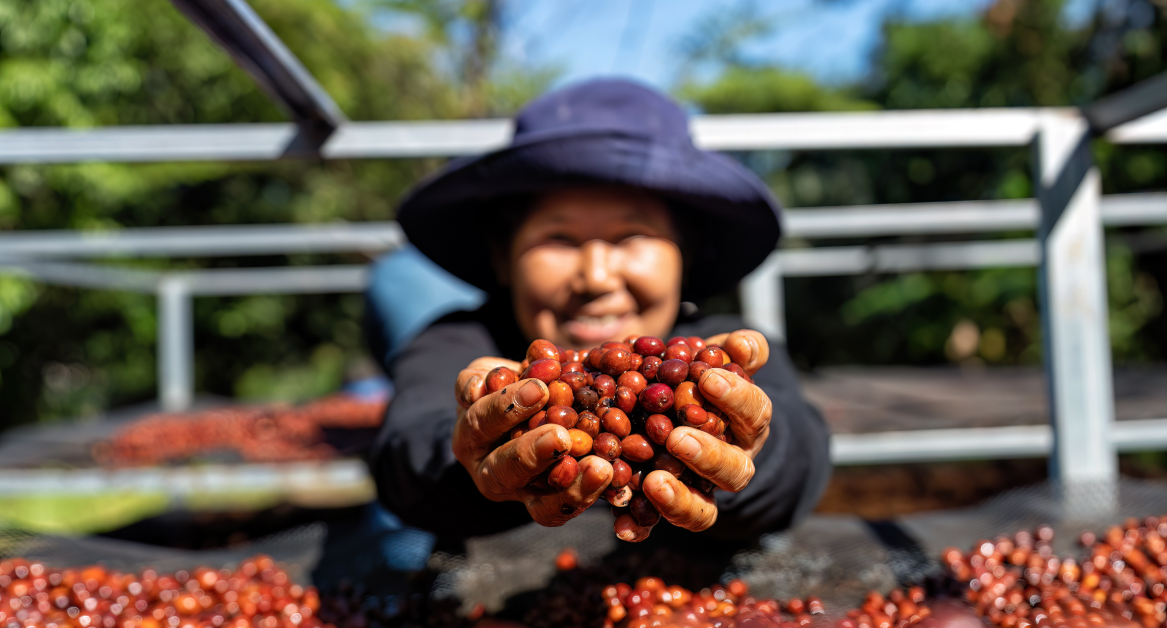For centuries, humanity has heavily relied on farming systems that primarily focused on immediate yields. These systems have undeniably catered to the ever-growing global demand for food and fiber.
But in the process, we’ve often overlooked the long-term effects of such practices on our planet’s health and sustainability. How can we maintain a balance between our immediate needs and the well-being of future generations?
Sustainable agriculture practices not only prioritize the health of our soil organisms and environment but also ensure that farming remains viable and prosperous in the long term. By embracing sustainable practices, we’re not just focusing on present food requirements. We’re also laying down a robust foundation for generations to come.
Why the shift from conventional to sustainable farming?
Conventional farming has been the backbone of our food production for ages. However, in our rush to meet the global food demands, we’ve often turned a blind eye to the environmental degradation caused by conventional agriculture practices. The intensive use of chemical fertilizers, monocultures, and the prioritization of short-term gains have jeopardized natural ecosystems and the quality of life for both humans and the ecosystem at large.
Contrarily, sustainable agriculture practices offer a myriad of benefits:
- Preserving soil health: Sustainable farming practices like crop rotations, cover crops, and the incorporation of organic matter into the soil ensure it remains fertile and productive.
- Promoting biodiversity: These practices create a harmonious environment where various crops and livestock can thrive. Agrobiodiversity ensures a balanced ecosystem, reducing the risks of diseases and pests.
- Securing future food supply: With an ever-increasing global population, securing our food supply for future generations is critical. Sustainable farming systems focus on long-term productivity rather than just immediate yields.
- Supporting farmer livelihoods: The transition to sustainable practices often results in reduced input costs and better farm-gate prices, directly benefiting farmers’ economic well-being.
- Combatting climate change: Sustainable farms play a pivotal role in sequestering carbon, reducing greenhouse gas emissions, and countering the adverse effects of climate change.
Moreover, today’s consumers are becoming increasingly conscious of their choices. They prefer products sourced from sustainable farms, recognizing the interconnectedness of their food choices, personal health, and the environment’s well-being.
Key sustainable agriculture practices
Let’s explore some of the most impactful ones and see how they’re revolutionizing the way we in sustainable food systems cultivate our lands and nurture our livestock.
1. Crop rotation and diversification
This age-old practice involves growing different types of crops in a sequence on the same land. It breaks pest cycles and increases the soil moisture and fertility.
Example: After growing a nutrient-consuming crop like corn, a nitrogen-fixing legume like beans can be planted to restore the soil’s balance.

2. Organic farming
Prioritizing natural methods over synthetic inputs, organic farming is a holistic approach that emphasizes soil health, biodiversity, and ecological balance.
Example: RegenX’s sustainable agriculture approach enables buyers to source ingredients free from synthetic chemicals, promoting a cleaner ecosystem.
3. Conservation tillage
This practice minimizes soil disruption, reducing soil erosion and retaining water. It allows crop residues soil nutrients and organic matter to remain on fields.
Example: No-till farming, a subset of conservation tillage, leaves previous crop residues untouched, fostering natural decomposition and enhancing soil quality.
4. Agroforestry
Melding together agriculture, livestock production and forestry, agroforestry is a multifunctional system where trees or shrubs are grown around or among crops or pastureland. Plus, agroforestry aligns well with the EU deforestation regulation, ensuring that farming does not contribute to deforestation but instead plays a part in forest conservation.
Example: A farm growing coffee under the canopy of taller fruit trees like bananas, maximizing land use and promoting biodiversity.

5. Sustainable livestock farming
Focusing on holistic management of animal production practices, this approach ensures livestock’s well-being, reduces environmental impact, and yields healthier produce.
Example: Grazing cattle on rotational pastures, allowing lands to recover, leading to healthier soil and reduced methane emissions.
6. Cover cropping
Growing specific crops not intended for harvest, protects the soil, improves soil health and fertility, and manages pests.
Example: Planting clover during off-seasons, prevents soil erosion, suppresses weeds, and enriches the ground with essential nutrients.

7. Biological pest control
Utilizing natural systems of predators and organisms to control pests, this approach reduces the dependency on chemical pesticides.
Example: Releasing ladybugs to combat aphid populations in vegetable gardens.
8. No-till farming
As hinted earlier, this method involves planting new crops without disturbing the soil through tilling, preserving soil structure and organic matter.
Example: Directly sowing wheat seeds into unplowed soil, maintaining its natural layers and organisms.
9. Permaculture
An integrated design philosophy that simulates patterns in nature, ensuring resources are used in a closed-loop system, minimizing waste.
Example: Designing a garden where water from a fish pond is used to irrigate plants, and plant waste, in turn, feeds the fish.
10. Aquaponics
A sustainable system combining conventional aquaculture with hydroponics, fish and plants grow together in one integrated environment.
Example: Fish waste provides an organic nutrient source for plants, and the plants help filter and purify the water, which is then recirculated back to the fish tanks.
11. Agrobiodiversity
This emphasizes the importance of genetic variety in plants and animals to ensure resilience against diseases, pests, and climate change.
Example: Cultivating multiple rice varieties to safeguard against potential diseases that could wipe out a single strain.
12. Water management
Efficient water use and storage practices ensure water conservation and optimal usage.
Furthermore, the broader perspective of agricultural water management delves into ensuring that water resources are used in a manner that is sustainable for both the environment and future generations. By addressing water scarcity and improving water quality forage crops, we pave the way for both healthier crops and ecosystems.
Example: Implementing drip irrigation systems that provide water directly to plant roots, reducing evaporation and conserving water.
13. Waste recycling and composting
Turning organic waste into valuable compost, this process enriches the soil, reduces the need for chemical fertilizers, and minimizes waste.
Example: Using vegetable scraps, fallen leaves, and manure to create a rich compost heap that can be returned to the garden.

14. Polyculture
Growing multiple crops in the same space simultaneously, this method maximizes land usage, reduces pest issues, and promotes a balanced ecosystem.
Example: Growing beans, corn, and squash together. While beans fix nitrogen in the soil, corn provides a structure for beans to climb, and squash acts as a ground cover, reducing weed growth.
✨ Read more: Exploring Sustainable Agriculture Examples Around the Globe
Charting a sustainable tomorrow with agriculture
The age of reckless exploitation of our planet’s natural resources, is fading, and in its place is a future shaped by sustainable agricultural practices. We’ve delved deep into the many techniques that farmers worldwide are employing, from no-till farming to the wonders of agrobiodiversity.
RegenX isn’t just observing this transformation; we’re actively pioneering it. Through the RegenX Flywheel, we’re bridging the gap between global buyers and regenerative farmers, catalyzing a sustainable future in agriculture – helping reduce soil erosion, deterioration, and climate change and creating a better livelihood for regenerative farmers.
Learn how we do it. Contact us now!



